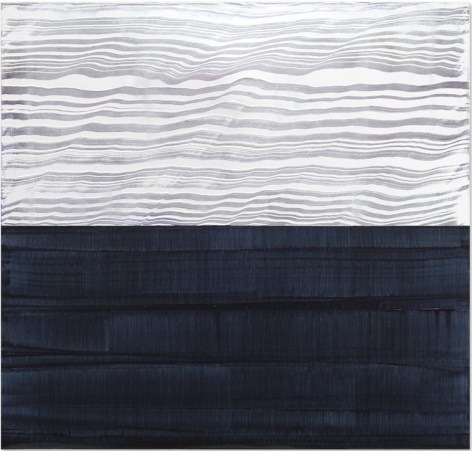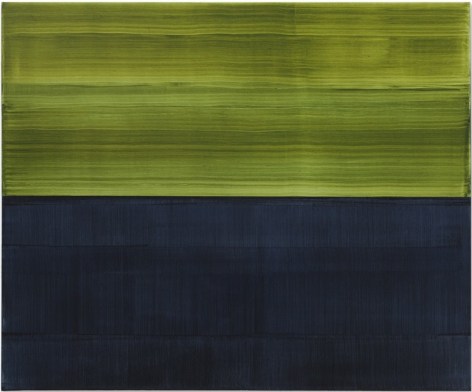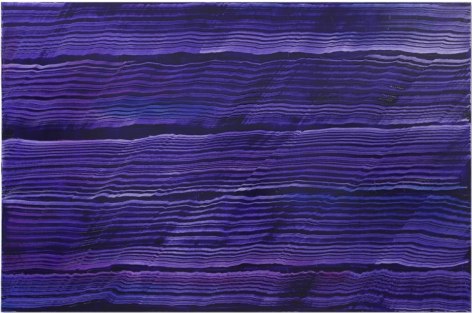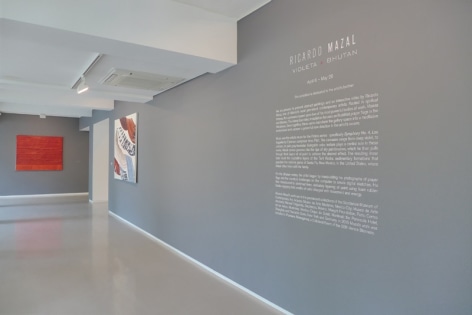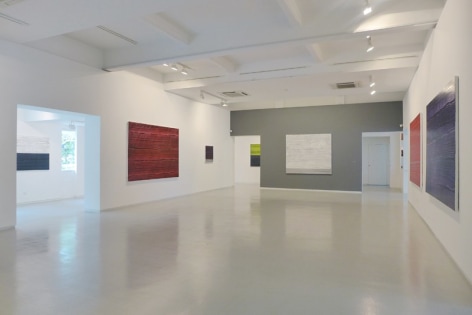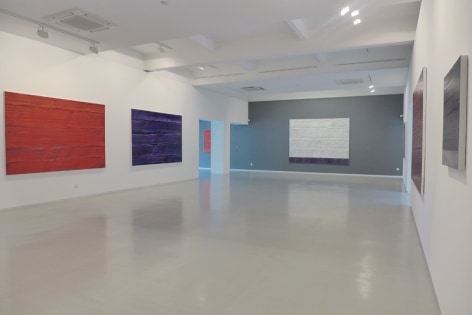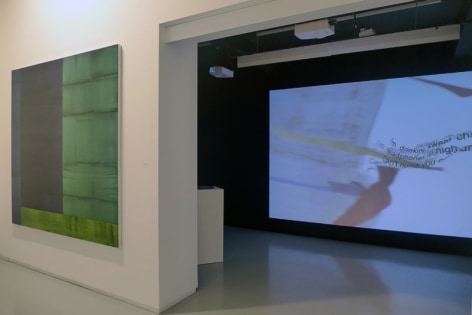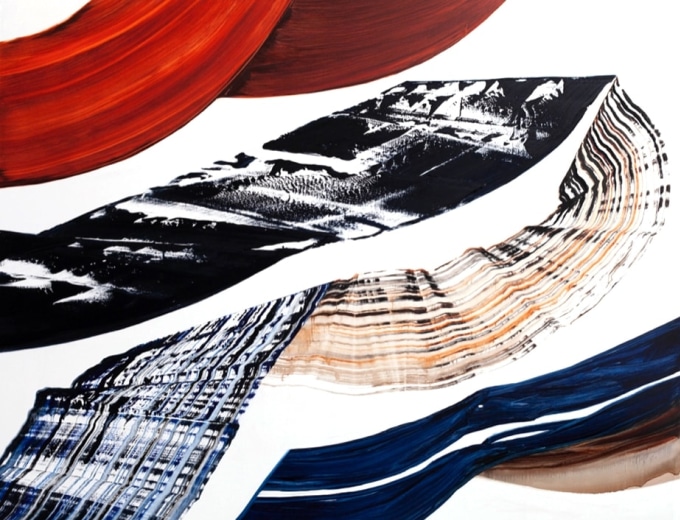
For his second solo show at Sundaram Tagore Singapore, acclaimed Mexican-born artist Ricardo Mazal presents new abstract oil-on-linen paintings that expand upon two of his most powerful bodies of work: Violeta and Bhutan. Both of these series draw on Mazal’s ongoing fascination with spiritual themes and reveal his increasingly abstract approach.
The new work from Violeta, the first series featured in this exhibition, is the artist’s most refined and personal body of work to date. These minimalist, abstract paintings envelop viewers in lush, vibrant color. Mazal explores a broad spectrum of hues within the violet family, from stark, lavender-tinted white to crimson, aubergine and the deepest purple-black. He bisects several canvases, creating opposing color planes, adding an element of tension.
In a departure from previous studies stemming from his travels, Mazal began this series in his Santa Fe, New Mexico, studio while working on a painting where the subject matter was set against a midnight-blue background. Looking to enliven the canvas, Mazal added a single, vivid streak of violet and was immediately struck by how the color electrified the composition. What began as an endeavor to recapture the original tone and texture of this random swath of color ended up becoming a detailed investigation that resonated with the artist in unexpected ways.
In the place of photography, Mazal’s traditional starting point for his work, music was his muse—specifically Symphony No. 4, Los Angeles by Estonian composer Arvo Pärt. When he began this series, Mazal was grappling with grief surrounding the long-term illness of a family member and the music both inspired and centered him while he painted. Color became a spiritual outlet with music as the conduit.
Beyond color, texture plays a central role in this body of work. Mazal carves grooves into the tips of dry paintbrushes, which he then pulls through thick layers of oil paint to achieve the desired effect. The resulting linear trails recall the crystalline layers of the Tent Rocks, sedimentary formations that populate the national parks of Santa Fe where Mazal often hikes with his family. They also create small chasms of varied color that invite the viewer to examine the work more closely in an effort to discover their depths.
The Bhutan series culminated Mazal’s near decade-long investigation of the sacred burial rituals of various cultures. His explorations have spanned from the Mayan tomb of the Red Queen in Palenque, Chiapas, Mexico to the Peace Forest cemetery in Odenwald, Germany. Bhutan focuses on the region’s billowing prayer flags that adorn the landscape with brilliant colors, each symbolizing a different element of nature. The flags, which are hung from bridges, mounted on rooftops and strung from one hilltop to the next, are often inscribed with mantras or prayers for good fortune and it is believed that the wind delivers these blessings to the world. Mazal has deconstructed and reconfigured details from previous paintings in the series to create the works on view here, employing a regenerative and cyclical process that closely parallels the spiritual themes he explores.
Mazal began this series with photography, a medium that he describes as a bridge linking reality to abstraction. He manipulated his photographs from Bhutan on the computer to create digital sketches. He then transitions to stretched linen, delicately layering oil paint using foam-rubber blades, applying bold swaths of color within grid-like compositions. Although carefully compartmentalized, Mazal’s gestural strokes are charged with movement and energy. The resulting works are more abstract than previous series, demonstrating that with each investigation, Mazal continues to distill his concepts down to their simplest form.
A highlight of the exhibition is an interactive video installation, inspired by the Buddhist belief that prayer flags generate positive thoughts. Viewers are invited to inscribe their own thoughts and prayers onto a touchscreen and then watch as their words instantly integrate into the digital composition of blowing, billowing flags. The words then dissipate, as if carried away by the wind. The piece was first executed in Mazal’s solo show at the Museo Estación Indianilla, Mexico City, in 2015.
Seen together, this selection of paintings and video transforms the gallery space into a meditative environment and uncovers a powerful new direction of the artist’s oeuvre.

